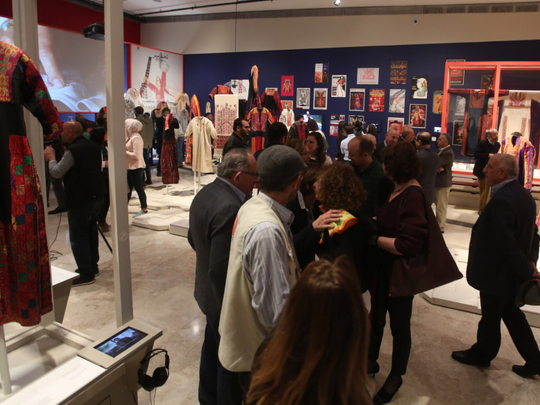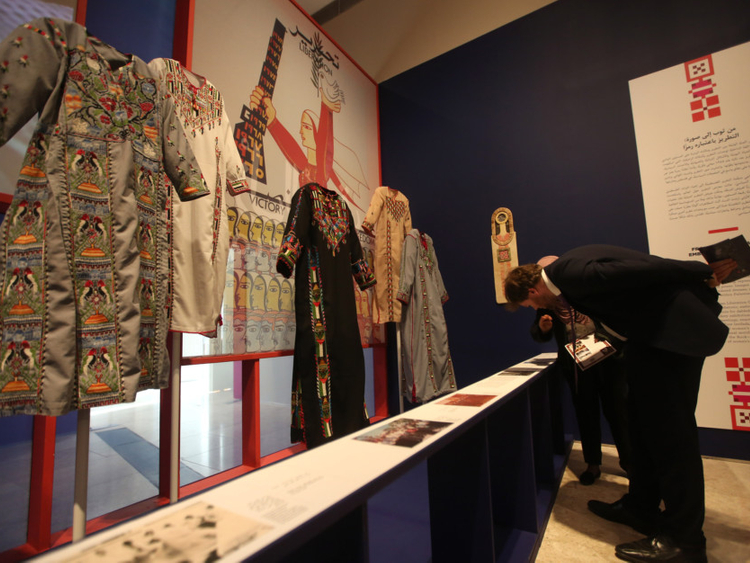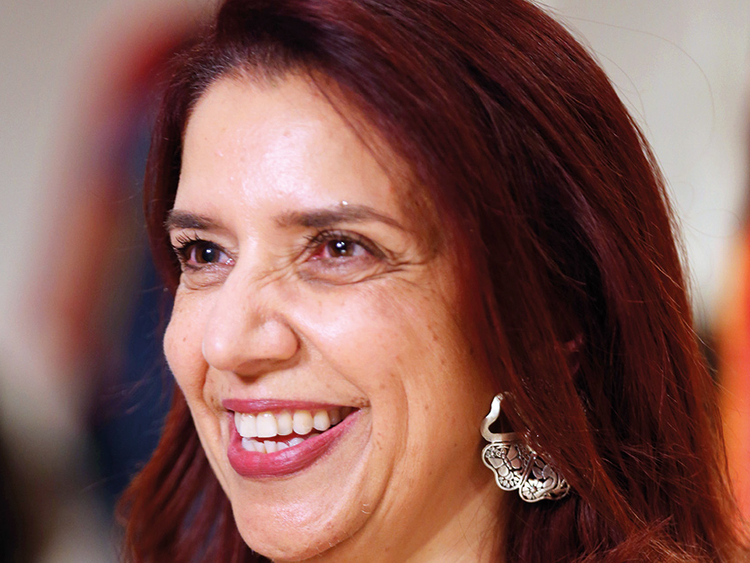
Palestinians have had their land taken away, their music misappropriated and their food hijacked — but their embroidery and its significance for their identity proudly remains one of the most iconic symbols of their resistance.
Last month, the Palestinian Museum in Birzeit, located outside of Ramallah, launched Labour of Love: New Approaches to Palestinian Embroidery, which will run through August.
Building on years of research and fieldwork, this new exhibition seeks to critically re-orientate approaches to Palestinian embroidery, its history and contemporary significance. The exhibition also examines the politicisation of the handicraft, its use in paintings and posters, the implications of its commodification and the nature of its production by NGOs today.
From a women’s perspective, and in a time of heightened global conversation on women’s rights and dominion over their bodies, Labour of Love explores Palestinian embroidery through the lenses of gender, labour, symbol, commodity and class.
Structured around these thematic poles, the exhibition traces Palestinian embroidery’s shift from an historic and individual practice associated with self-expression to a cultural artefact and marker of national heritage.
Zina Jardaneh, the chair of the board of the Palestinian Museum, explains the beginning of Palestinian embroidery within its historical context. “Embroidery was practiced by Palestinian women for centuries, mostly in rural areas. [It was] passed on from one generation to the next,” she tells Weekend Review. “The oldest pieces that have survived date back to the early 19th century. The Palestinian Museum is now showcasing a thobe that dates to the mid-19th century. It is a Malak thobe from the area of Bethlehem. Palestinian embroidery has been showcased and celebrated over the years. This exhibition celebrates its exquisite beauty, explores its history and geography, but most importantly attempts to dig deeper into new aspects and asks questions that have not been addressed in the past. It brings something new to the table by exploring gender, class, labour and commodification all as related to the changes in the thobe and the practice of embroidery over the past 100 or 150 years.”
Is Palestinian embroidery different from that in the region, and does culture and local context play a key role in designs, having viewed embroidery from the north of Palestine that differs from the south?
“This is true. Each region had and still has, its distinct cut, style, colours, patterns and motifs,” Jardaneh says. “Women embroider [patterns] inspired by nature and their beliefs. Embroidery underwent changes when women had the chance to mix with others from different communities. The arrival of modern modes of transport for example, allowed women to travel to souks and meet women from other towns and villages. The biggest change happened after the Nakba as different communities mingled and became neighbours in refugee camps in the region, and also, with the introduction of the French DMC thread that introduced novel pattern books. Nowadays patterns and stitches are shared on social media platforms.”
So, with Palestine being occupied, what role does embroidery play in resistance?
“Embroidery became a symbol of identity, revolution and resistance in the late 1960s and early 1970s,” Jardaneh explains. “A Palestinian woman wearing an embroidered thobe became a symbol for the nation in paintings and poster art depicting power and resilience. Embroidery exhibitions travelled the world as backdrops for important political meetings. Later and during the first Intifada, women embroidered Palestinian flags, doves and rifles on their thobes as acts of resistance. Today, and despite the evolution of embroidery into a commodity, it remains a symbol to a great extent. Like many forms of Palestinian culture and heritage, Palestinian embroidery has been subject to consistent attempts of appropriation but has resisted and endured. It remains firmly Palestinian.”
Labour of Love tells a material history of Palestine, giving voice to little-heard stories through the intimate catalyst of clothing. Intifada dresses — combining traditional motifs with rifles, maps and political slogans — were stitched by women in protest and solidarity during the First Intifada. Such dresses rendered women’s bodies active sites of political resistance, implicitly challenging popular images of women as anonymous carriers of heritage.
But why is the museum featuring this exhibition at this specific moment?
“This exhibition is based on four years of research,” Jardaneh says. “It seeks to celebrate embroidery beyond its significance as heritage, but rather tells many unknown stories that shed light on the material history of Palestine as well as social, political, economic and cultural developments over the years.”
Amongst the pieces on display, one may feast on a European-style shift dress delicately embroidered on blue silk and melded with foreign fashion with traditional detail as early as 1921. There’s also a dress donated from one woman to another after the Nakba, patched with cloth from a sack of UNRWA flour. Polaroids from 1970s Lebanon show women in pink embroidered jumpsuits, modelling embroidered political motifs.
But what’s the impact of the exhibition so far? According to Jardaneh that’s still to be assessed but the early response has been very positive and enthusiastic. “There will be great interest not only in considering its beauty as a craft and its significance as cultural heritage but will hopefully be a trigger for a conversation to address the many questions the exhibitions seek to answer, especially with regards to its commodification,” she says. “This applies both to the local and international scenes.”
So the future is bright, then.
“Palestinian embroidery is alive,” Jardaneh says. “It has come full circle and is now part of many Palestinian women’s attire regardless of which dress mode they opt for. Young and talented designers have brought it back in full force. It has resisted all attempts of appropriation and is now firmly celebrated and acclaimed as Palestinian heritage.”
What’s interesting too is that while men are not naturally perceived as embroiderers, the exhibition features objects and testimonies from men who embroidered while being held as political prisoners in Israeli prisons. Their work mingles expressions of national pride with romantic love, disrupting expectations around embroidery and gender.
At the heart of the exhibition is a display of 80 historic dresses and accessories, drawn from every region of Palestine. Placed in conversation with archival photographs, posters, paintings, music and newly commissioned video, the exhibition amplifies female voices and histories, casting fresh light on paradigmatic cultural material.
Labour of Love also includes a parallel public programme of lectures and events, an educational programme tailored for children, and a catalogue.
Embroidery not only occupies a central position in Palestinian culture, it serves as guardian of its cultural heritage resisting any appropriation whatsoever.
Rafique Gangat, author of Bending the Rules, is based in Occupied Jerusalem.














